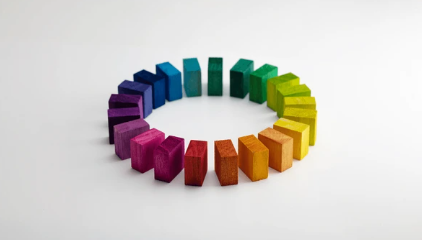Understanding Color Correction in After Effects

Color plays a pivotal role in storytelling and visual impact within your After Effects projects. It can evoke emotions, set the mood, and guide the viewer's eye. However, footage or compositions can sometimes appear dull, lacking the vibrancy or balance you envisioned. Here's where mastering color correction in Adobe After Effects comes in handy. This article will equip you with the knowledge and techniques to transform lackluster visuals into stunning displays of color harmony.
Understanding Color Correction
Color correction is the process of manipulating and enhancing the colors within your project. It goes beyond simply making things brighter; it encompasses a holistic approach to achieving the desired color aesthetic. Common color correction goals include:
- Balancing Colors: Ensuring there's a harmonious relationship between different color hues within the composition.
- Correcting Color Casts: Removing unwanted color tints that might dominate the image (e.g., a yellow cast from indoor lighting).
- Enhancing Contrast: Increasing the difference between light and dark areas for a more visually engaging image.
- Adjusting Saturation: Boosting or reducing the intensity of colors to achieve the desired vibrancy.
Your Color Correction Toolkit
After Effects offers a wide range of tools for color correction, each catering to specific needs. Here are some popular methods and their applications:
- Levels: A versatile tool for adjusting overall image brightness, contrast, and shadows/highlights. Use the sliders to achieve a balanced and well-exposed image.
- Curves: Provides more precise control over color correction. By manipulating the curves, you can selectively adjust brightness and contrast for specific color channels (red, green, blue). This allows for targeted color adjustments.
- Color Balance: Useful for correcting color casts or fine-tuning the overall color balance of your image. Adjust the sliders for shadows, midtones, and highlights to achieve the desired color temperature (warmer or cooler).
- Selective Color: Allows for targeted adjustments to specific color ranges. Choose a color range (e.g., Reds, Yellows) and adjust the sliders to modify their saturation and lightness. This is great for emphasizing specific colors within your composition.
- Hue/Saturation: A straightforward approach for adjusting overall color hue and saturation. Use the Hue slider to shift the color tint and the Saturation slider to control the intensity of colors. Be mindful of overdoing it, as it can lead to unrealistic results.
Advanced Techniques for Power Users
For more complex color correction needs, After Effects offers advanced tools:
- Lumetri Color: A powerful panel offering a comprehensive suite of color correction tools. It provides functionalities similar to the basic tools mentioned above, but with greater control and flexibility.
- Color Lookup Tables (LUTs): Presets that apply specific color grades to your footage. LUTs can be a time-saving way to achieve a certain color style, but remember to experiment and find one that complements your project.
- Primary and Secondary Correction: A professional technique that separates color correction into two stages: primary adjustments affect the entire image, while secondary adjustments target specific color ranges for more nuanced control.
Workflow Tips for Effective Color Correction
Here are some best practices to ensure successful color correction in your After Effects projects:
- Start with Well-Exposed Footage: The quality of your source footage significantly impacts the final result. Aim for well-exposed footage with minimal color casts for easier correction.
- Work in a Log Colorspace: Consider using a Log colorspace like Log Gamma for professional editing. It offers a wider dynamic range, allowing for more detailed color correction without clipping highlights or crushing shadows. However, conversion back to Rec.709 or sRGB is necessary for final output.
- Calibrate Your Monitor: An uncalibrated monitor can display colors inaccurately. This means your color correction decisions might not translate well to other screens. Invest in a calibration tool for a more reliable workflow.
- Use Reference Images: Having reference images as a guide can help you achieve a specific color style or ensure consistency across different scenes. Compare your work to the reference and adjust colors accordingly.
- Make Subtle Adjustments: It's often better to make small, incremental adjustments and preview the results frequently. Overdoing color correction can lead to unnatural-looking visuals.
- Save Color Presets: If you find a color correction setting you love, save it as a preset for future use. This saves time and ensures consistent color across your projects.
Conclusion
Color correction in After Effects is a powerful tool for transforming ordinary visuals into captivating masterpieces. By understanding the color correction tools, applying the techniques discussed above, and adopting a methodical workflow, you can harness the power of color to elevate your After Effects projects to the next level. Remember, color correction is an art form as much as a technical skill. Experiment with different tools, explore various workflows, and develop your own unique style. Here are some additional thoughts to consider:
- Practice Makes Perfect: The more you color correct, the better you'll become at identifying color issues and applying the appropriate techniques. Don't be afraid to experiment and learn from your experiences.
- Seek Inspiration: Look at films, music videos, and other visually stunning media with exceptional color grading. Analyze what makes their color palettes work and try to incorporate similar techniques into your projects.
- Color Grading vs. Color Correction: While color correction focuses on fixing color issues and achieving balance, color grading goes a step further. It involves using color as a creative tool to set the mood, tell a story, and evoke specific emotions. As you develop your color correction skills, consider exploring color grading techniques to further enhance your visual storytelling.
With dedication and a passion for color, you can transform your After Effects projects into vibrant and visually captivating works of art. So, go forth and conquer the world of color correction!



